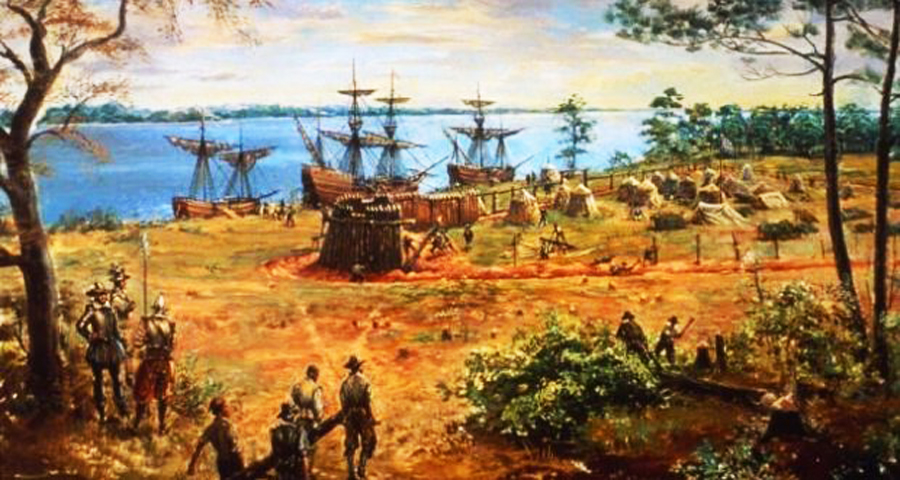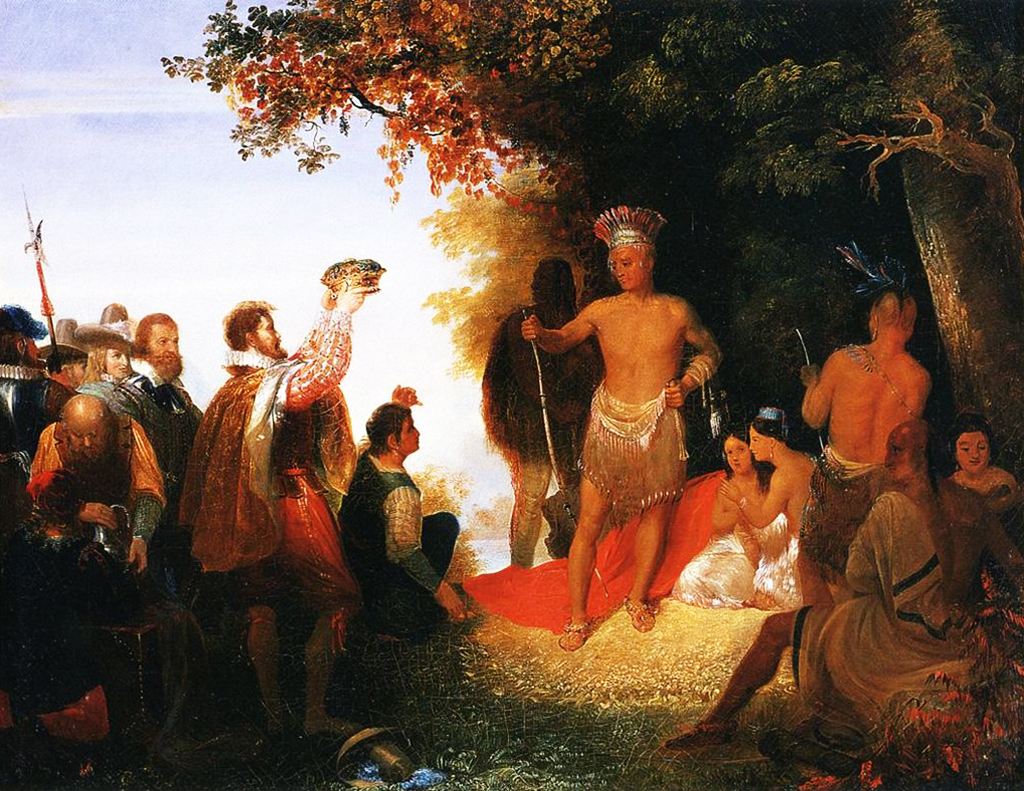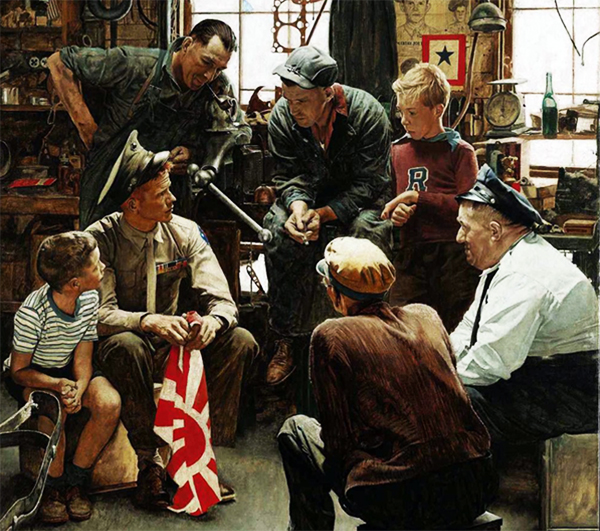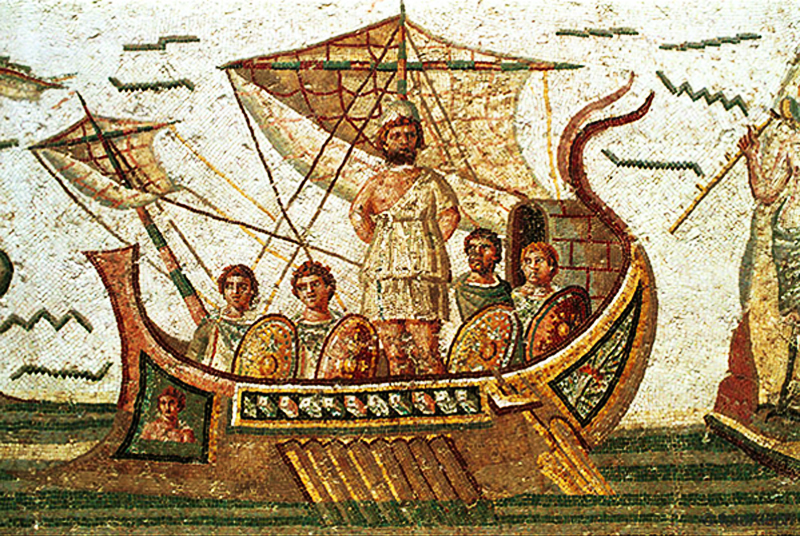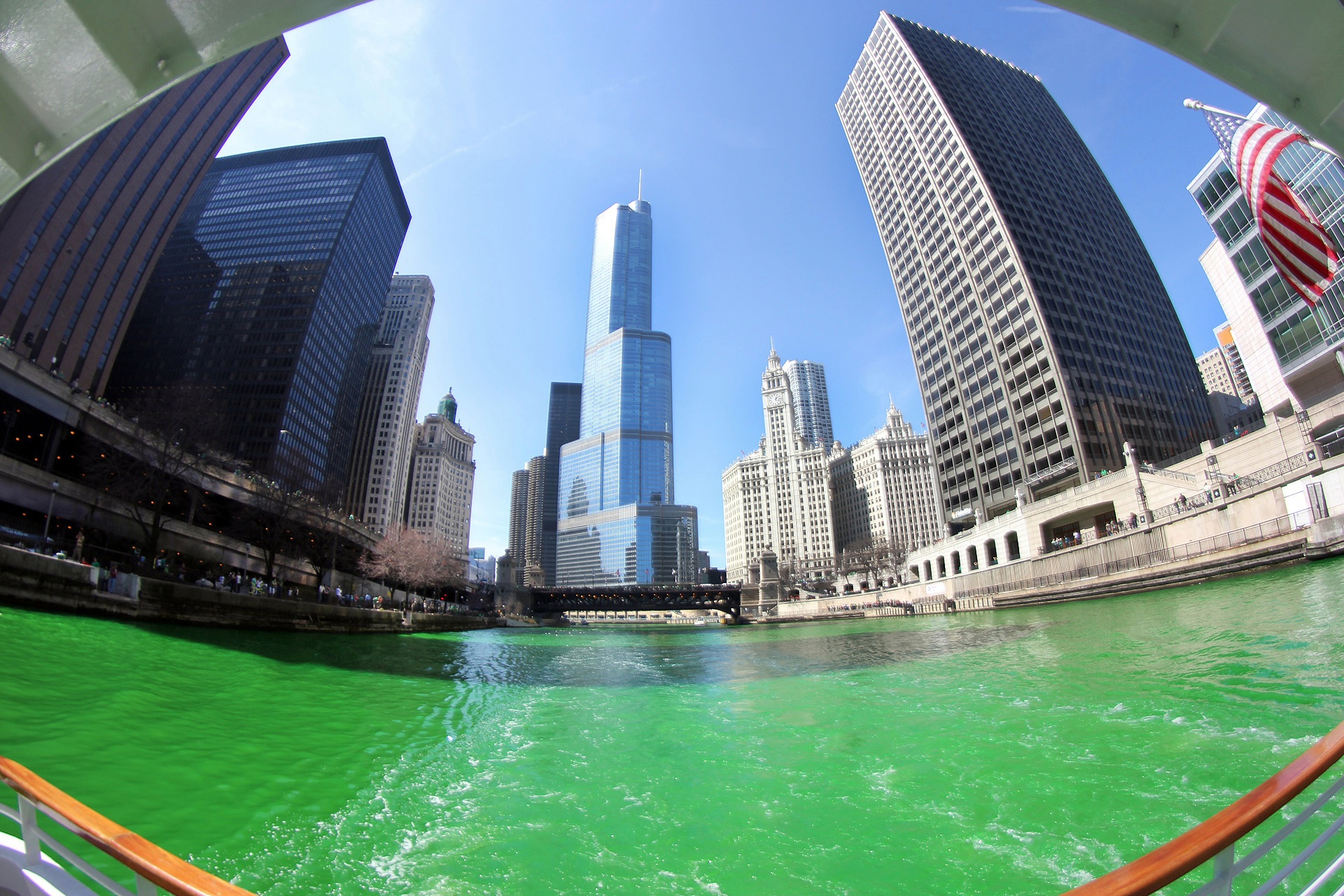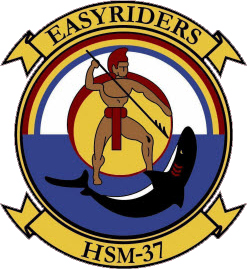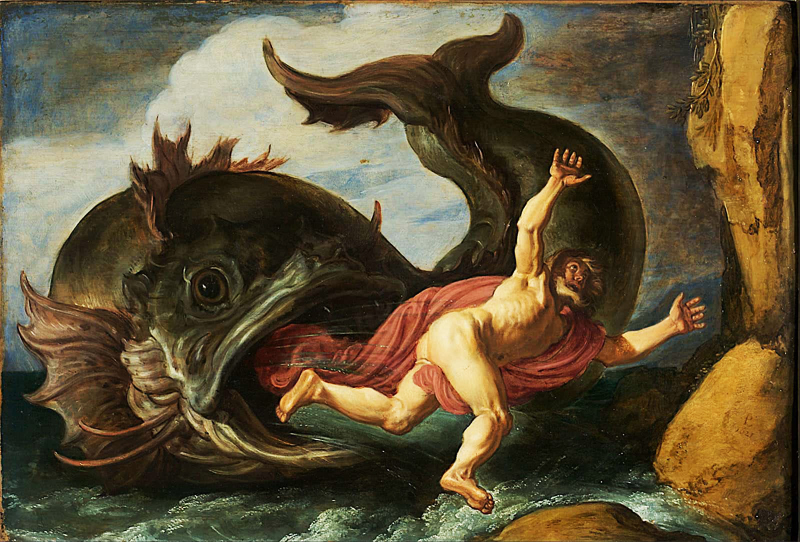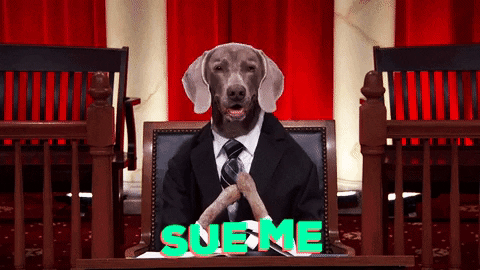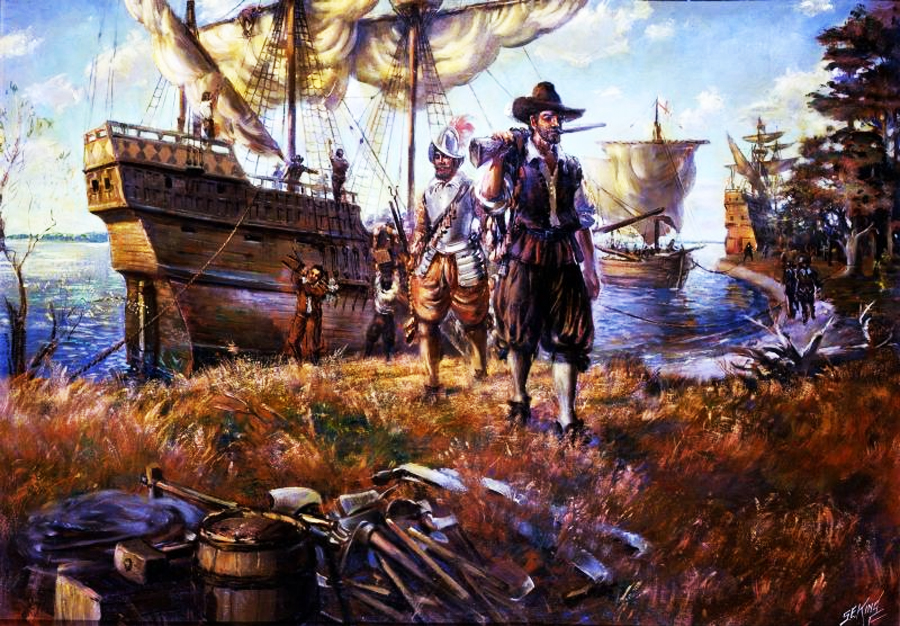
An expedition led by Captain Christopher Newport arrives at Jamestown on May 13, 1607
An expedition led by Captain Christopher Newport arrived at Jamestown: The next day, the passengers went ashore and this site became the first permanent settlement English colony in America.
On May 13, 1607 three English ships the Susan Constant, Godspeed and Discovery with approximately 144 settlers and sailors, will land and plant the first permanent English colony in North America. Established by the Virginia Company of London this settlement would be called Jamestown, after king James I.
On June 15, 1607 the fleet commander Captain Christopher Newport will return to England leaving 104 settlers.
Long before the English colonists reached Virginia in 1607, they incarcerated their first prisoner - John Smith. He was too outspoken during the beginnings of the journey from London to Virginia. After the three-vessel expedition resupplied at the Canary Islands, the other leaders of the expedition accused Smith of mutiny.
Smith wrote later that he was “restrained as a prisoner” for the last 13 weeks of the trip from the Canary Islands, so the first prison in Virginia was a cabin on the Susan Constant as it sailed into the Chesapeake Bay. In the close quarters of the ships during an ocean journey, “restraint” may have consisted of a loss of status and shunning by the leaders who had tired of hearing his advice, but he could have been shackled in a cabin. According to Smith, he was able to communicate to others on the ship that he was being treated unfairly.
After arriving in the New World, the unhappy leaders did not mellow in their attitude towards John Smith. Captain Christopher Newport decided to hang Smith when the three ships reached the island of Nevis. Smith reported with wry understatement later that:
“...a pair of gallows were made, but Captain Smith for whom they were intended, could not be persuaded to use them.”
Smith may owe his life to the intercession of other leaders on the journey. Captain Christopher Newport had been given exclusive command during the trip across the Atlantic Ocean, and while on Nevis no one knew who would be appointed to the Council that would govern once the colony was established, but key leaders such as Bartholomew Gosnold must have known that Smith had been recruited by the Virginia Company of London for his military skills. Newport had the authority as sole leader during the ocean journey phase to execute a mutineer, but was evidently persuaded to show mercy.
Smith remained estranged from the other colonial leaders in Virginia until June 10, when he was finally released from the Susan Constant, the first prison in Virginia. Smith was given the seat on the council assigned to him in the instructions that had been prepared by the Virginia Company in London in 1606.
On June 22, Christopher Newport took the Susan Constant back to England, and the Godspeed accompanied him. The smallest vessel, the pinnace Discovery, was left behind in Virginia. It ended up as the second prison in the colony.
Though Virginia Company leaders were able to lock up the blacksmith and Native Americans briefly on land and keep Wingfield/Kendall incarcerated on a ship, they were unable to keep colonists from wandering away from the fort or leaving the peninsula. Powhatan benefitted from colonists willing to trade supplies stolen from the Virginia Company storehouses, and from deserters who brought him intelligence, tools, and even weapons. The loss of supplies ended only after Smith placed a blockhouse to control passage across the narrow peninsula
In addition to arresting each other, the council did order the seizure of Native Americans and keep them within the walls of the fort at Jamestown. In the spring of 1608, the colonists were frustrated by steady pilfering items made of iron and copper, and by intermittent attacks on individuals or groups who left the safety of the fort. The English seized a dozen men one day, adding to four or five already being held as punishment for some sort of offenses.
In response, the Native Americans around the fort captured two men who had been gathering food. John Smith reacted by leading a force on the barge to various settlements along the James River, burning towns and destroying canoes. The English also separated the captives and fooled them into thinking their friends were being executed.
After three days, Powhatan sent messengers (including Pocahontas) to request the release of his men. The colonists let them go, thinking that the Native Americans had been intimidated sufficiently. The alternative was to execute the prisoners, or to whip them and let them go. There was no space in which to restrain them indefinitely, and not enough food to feed long-term prisoners. After the short imprisonment, the small-scale attacks stopped briefly.
During the Starving Time in the winter of 1609-10, Virginia Company officials at Jamestown had to deal with murder and cannibalism. Punishment came quickly after recognition of the crime; there was no consideration of long-term incarcertation. George Percy, president of the council at the time, wrote:
“...one of our colony murdered his wife, ripped the child out of her womb and threw it into the river, and after chopped the mother in pieces and salted her for his food... for the which cruel and inhumane fact I ajudged him to be executed, the acknowledgement of the deed being enforced from him by torture having hung by the thumbs with weights at his feet a quarter of an hour before he would confess...”
In 1610, Percy was faced with the challenge of incarcerating captured members of the Paspahegh tribe. That problem was solved by killing the prisoners, eliminating the need for using any structure as a prison.
Percy led an expedition against the Paspahegh tribe, living just upstream of Jamestown, after Sir Thomas Gates finally arrived from Bermuda and took charge of the colony. The English raiders captured several Paspahegh men, plus the queen and two children. The men were killed, but the queen and children were loaded on the boat to be carried back to Jamestown.
On the trip back downstream, the English threw the two children overboard into the James River and used them for target practice. Percy “had mutche to doe To save the quenes lyfe” and bring her alive to Jamestown.
Once there, Sir Thomas Gates decided he did not want her as a hostage. He directed that she should be burnt alive rather than kept alive as a prisoner requiring food and guards. Rather than follow the suggestion, Percy had the queen executed by sword thrusts. It may have been a more-humane technique than burning, but was equally effective in eliminating the need for a prison.
Virginia Places.org / Wikipedia / Encyclopedia Britannica /
Exploration Mariners Museum.org / National Parks Service.gov / Encyclopedia Virginia.org /
An expedition led by Captain Christopher Newport arrives at Jamestown on May 13, 1607 (YouTube) 

This Day in History May 13
• 1568 Battle of Langside: The forces of Mary, Queen of Scots, are defeated by a confederacy of Scottish Protestants under James Stewart, Earl of Moray, her half-brother.
• 1787 Captain Arthur Phillip orders left Britain for Australia. He successfully landed eleven ships full of convicts on January 18, 1788, at Botany Bay. The group moved north eight days later and settled at Port Jackson.
• 1846 Mexican–American War: of the Oglala Lakota surrenders to United States troops in Nebraska.
• 1861 American Civil War: Queen Victoria of the United Kingdom issues a “proclamation of neutrality” which recognizes the Confederacy as having belligerent rights.
• 1861 The Great Comet of 1861 is discovered by John Tebbutt of Windsor, New South Wales, Australia.
• 1880 Menlo Park, New Jersey, Thomas Edison performs the first test of his electric railway.
• 1912 The Royal Flying Corps:, the forerunner of the Royal Air Force, is established in the United Kingdom.
• 1940 World War II: Germany's conquest of France begins as the German army crosses the Meuse. Winston Churchill makes his “blood, toil, tears, and sweat” speech to the House of Commons.
• 1941 World War II: Yugoslav royal colonel Dragoljub Mihailović starts fighting against German occupation troops, beginning the Serbian resistance.
• 1948 Arab–Israeli War: The Kfar Etzion massacre is committed by Arab irregulars, the day before the declaration of independence of the state of Israel on May 14.
• 1998 Nuclear tests at Pokhran: India carries out two nuclear tests at Pokhran, following the three conducted on May 11. The United States and Japan impose economic sanctions on India.

